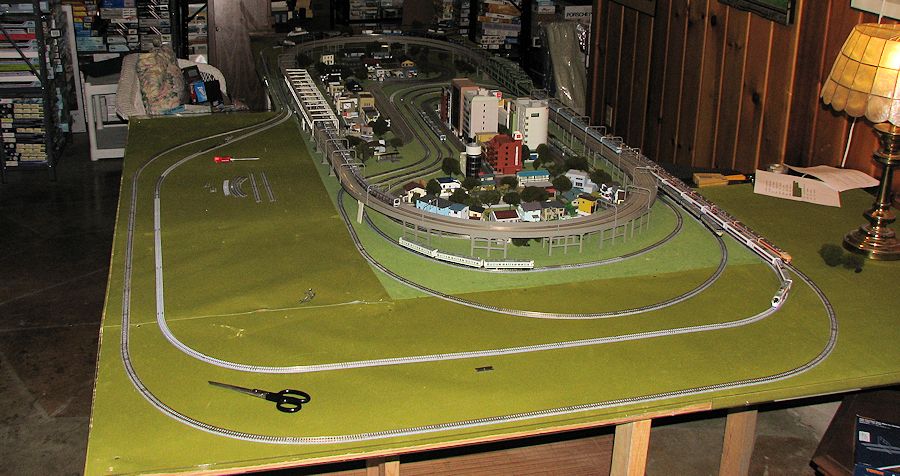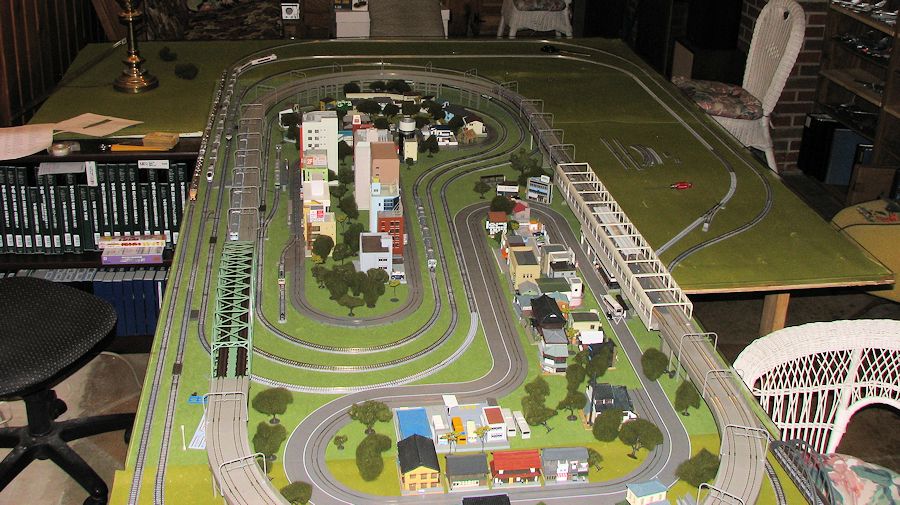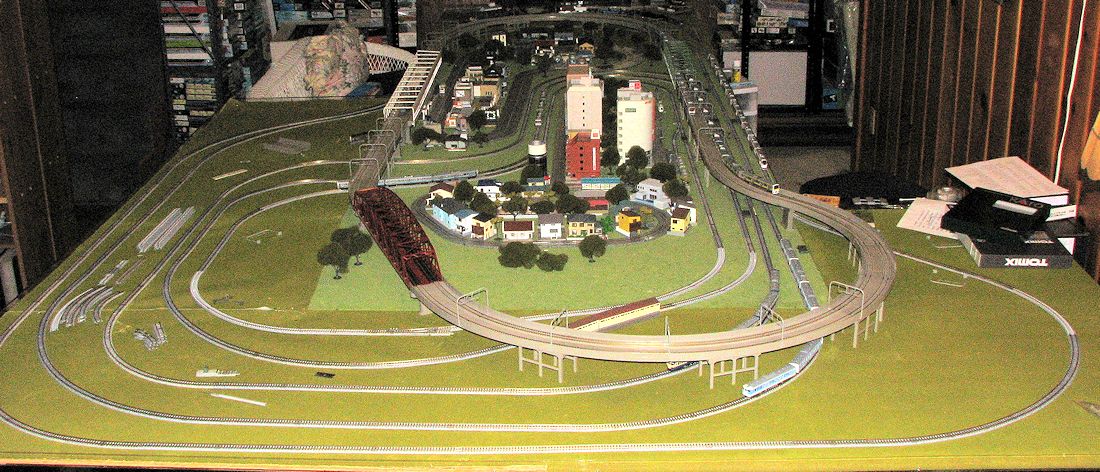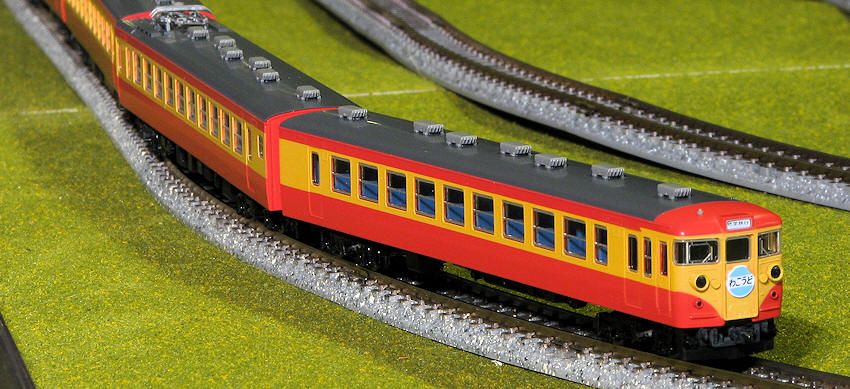

One of the biggest changes is that I was able to make enough room to expand the track. Not what I'd like, but again, room plays an part in things and I'd like no part of the board to be more than 3 or 4 feet from the edge or I'd not be able to reach stuff. What I did was to take a 4x8 sheet of plywood and cut it into an L that is two feet wide. This went on one end and the the remaining 2x6 foot section went down one side. I was somewhat limited as all the wiring was on one side and I did not want to cover that up with plywood. It means that I really cannot add another line, but it provided the opportunity to spread things out to where most areas are not so close any more, though there are still a few bottlenecks. I do plan to expand the inner loops out into the new area and even have the very inner section peek out past the overhead section. The overhead section will take a small turn into the area where the lamp is located in the image, but all that is in the future.


It will give me a chance to use up my spare track and add some more along with buildings and such. What I wasn't able to do was find the same shade of green mat as the place I bought the original had closed and the other places did not carry the brand I needed. I used Woodland Scenics green mat, but it is a plastic base rather than heavy paper so doesn't conform well to the edges as the the other. Not the prettiest, but it does muffle the sound of train running on bare wood so that is what works. I used 2x4 inch posts to connect the new and old bits together as well as offer support. Since they are held with screws, if I have to move it, I can unscrew the bits to get them out of the basement. Since I moved several bookcases to provide the room, I am using a low book shelf to hold the train sets.
Move forward a few weeks and an order I made for track (about $100 worth) arrives in a big box from Japan. This gives me an opportunity to make some pretty big additions. For the elevated track, I installed another bridge and was able to shuffle around some track to add the curve off to the right as shown in the image below. I had hoped to have it go farther, but will need a few additional pieces to make that happen.
Naturally, I used up all the pieces I ordered and can still use a few more as I had to dismantle a turnout to use its track. It took quite a while to make sure everything worked. Even with the large opening up of track, there are still a few rather narrow areas and it took a few derailments to fix all of them.

When it comes to trains, I've added a three car Series 313-1700 Iida Line set from Kato. You will notice that the shorter lines generally either run older, updated trains or have cars that have fewer entry/exit doors. In this case, where the big city lines usually have four or even six doors per side, the smaller lines may well have three. Limited express trains will generally only have two as the riders actually buy seats like on an airline.
Below, this is a Series 167 School Excursion Train from Tomix. One can do either a four, eight or twelve car train. The base set is four cars and an unpowered four car set is also offered to make the eight car set, which is what this one is. To do a twelve, add in another powered four car set. There are a number of optional bits on this train including the badge on the front. This has to be glued on and I chose a simple one. The set runs very well and the lights are nice and bright. It is also one of the more colorful trains on the layout.

The yellow trimmed train is a Series E231-500 set for the Chuo-Sobu Line from Tomix. This is a ten car train and is pretty much the same as the Yamanote Line set I bought that is made by Kato. The biggest benefit of Kato trains is that all the small car numbers are already printed in place. Tomix offers a sticker sheet where you cut these out and place them on the cars. As of yet, I've not done this to any Tomix trains. The benefit is that you are not limited to one car set, but could theoretically run several of similar trains from the same line, each car set with different numbers. I'm sure that enthusiasts in Japan find this to be a major plus. Of the few people I know who are into trains around here, few are into N gauge and none are into Japanese passenger trains!